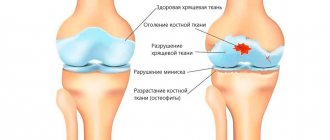The female reproductive system is a finely balanced mechanism that is closely connected with all systems of the female body and has a serious impact on their work. It consists of the external and internal genital organs. The first includes the vulva, vagina, cervix, labia majora and minora, and the uterus and appendages are located inside. Under the influence of pathogenic factors, the inflammatory process can affect any organ of the female reproductive system, and in some cases can lead to the development of inflammation in the entire pelvic area.
In addition to discomfort and pain, inflammatory diseases cause the development of serious pathologies - infertility, miscarriage, ectopic pregnancy, endometriosis, the development of malignant tumors and other dangerous complications. In addition, they can cause sexual dysfunction - decreased libido or refusal to have a full sex life. Therefore, any inflammatory process of the female genital organs requires high-quality and timely treatment.
Factors that contribute to the development of inflammation
- intrauterine manipulation (abortion, diagnostic or therapeutic curettage, etc.)
- surgical interventions on the abdominal and pelvic cavity;
- the presence of chronic pathologies of the pelvic organs;
- hormonal disorders;
- metabolic pathologies;
- Constantly wearing uncomfortable synthetic underwear:
- violation of the rules of hygienic care of the genitals;
- infection with sexually transmitted infections (STIs). Occurs during unprotected sexual contact (chlamydia, trichomoniasis, ureaplasmosis, syphilis, gonorrhea, candidiasis, HPV, etc.);
- uncontrolled use of antibacterial drugs, disrupting the normal microflora of the mucous membranes of the genital organs;
- hypothermia, weakened immunity;
- frequent emotional and physical overload, hypothermia.
Symptoms vary depending on the type and location of the inflammatory process.
Diagnostics
The ultrasound method is not sufficiently informative in diagnosing salpingoophoritis. It allows you to identify only space-occupying formations in the pelvis. Those. With ultrasound, it is possible to see the fallopian tubes, which are filled with fluid (with hydro- or pyosalpinx), as well as with the formation of abscesses (with purulent melting of the fallopian tubes and ovaries). Therefore, the diagnosis of acute inflammatory diseases of the uterine appendages is mainly based on clinical data and gynecological examination data.
Characteristic signs of inflammation
- Pain of varying localization and intensity - from strong spasmodic pain with adnexitis, to slight nagging pain with chlamydia.
- The presence of pathological discharge from the genital organs - white curdled, leucorrhoea, yellow-green, mixed with blood outside of menstruation, with a strong fetid odor, etc.
- Itching, burning in the external genital area, intensifying with the outflow of urine.
- The temperature may rise, weakness, fatigue, headache, insomnia, irritability, etc. may appear.
Treatment
Treatment of patients with acute salpingoophoritis should be carried out in a hospital setting.
The main place in treatment belongs to antibiotics, the effectiveness of which is determined by the properties of the pathogen and its sensitivity.
In the formation of purulent inflammation of the uterine appendages, the only effective method for 100% diagnosis, treatment and preservation of fertility is laparoscopy!!!
Chronic diseases of the uterine appendages are accompanied by the formation of adhesions in the pelvis, which disrupts the patency of the fallopian tubes, leads to infertility and also requires planned surgical treatment (laparoscopy).
Types of inflammation of the female reproductive system
- Vulvitis is inflammation of the vulva. Characteristic symptoms are itching, burning in the external genital area, and general malaise. Clinically, the disease is manifested by hyperemia and swelling of the vulva, purulent or serous-purulent discharge, and enlarged regional lymph nodes.
- Bartholinitis is an inflammatory process in the Bartholin glands. It is characterized by severe pain and discomfort in the area of the vaginal opening, as well as the formation of palpable formations up to 10 mm in size.
- Cervicitis and cervical erosion are inflammatory diseases of the cervix. The diseases are asymptomatic in most cases; there may be minor discharge, which is detected during examination.
- Vaginitis (colpitis) is inflammation of the vaginal mucosa. The acute form is characterized by itching, burning, purulent or serous-purulent discharge from the genital tract, pain during sexual intercourse.
- Endometritis is an inflammation of the mucous membrane of the uterine cavity. The pathology causes severe pain, increased body temperature, and the appearance of pathological discharge - serous at first, and then mixed with blood or pus. When the inflammatory process is chronic, the symptoms are less pronounced - the pain is not severe, but intensifies after sexual intercourse or physical activity.
- Adnexitis is a severe pathology that occurs in the uterine appendages (ovaries, fallopian tubes). The disease causes severe spasmodic pain, increased body temperature to 38-40°C, chills, nausea, sometimes vomiting, discharge mixed with pus, and urination problems. It is dangerous due to complications - ovarian abscess and rupture, intestinal abscess, inflammation of the peritoneum, etc.
- Candidiasis is an infection with fungi of the genus Candida, which is characterized by severe itching, swelling of the mucous membranes, and the appearance of cheesy discharge.
- Gonorrhea. The development of inflammation of the genitourinary system is caused by gonococcus (Neisseria gonorrhoeae). There are no pronounced symptoms, sometimes there are signs of urination problems, itching and burning in the vagina, discharge from the cervical canal mixed with pus. On examination, hyperemia and swelling of the urethral orifice and cervical canal are detected. The method of infection is unprotected sex.
- Urogenital chlamydia is caused by pathogenic microorganisms of the genus Chlamydia. The disease has mild symptoms and occurs in the absence of specific symptoms. Sometimes serous-purulent discharge from the genital tract and/or urethra appears, as well as itching in the urethra and urination problems.
- Genital herpes. Occurs when infected with the herpes simplex virus. The disease begins with itching, then signs of a viral infection appear - headache, fever, fever, weakness, which disappear with the appearance of a characteristic small blistering rash on the external genitalia, in the vagina or on the cervix.
The disease occurs in acute, subacute, chronic and latent forms.
To determine the cause of the pathology, in addition to external examination, a number of diagnostic studies are carried out:
- serological tests;
- bacterial culture of the vaginal microflora;
- microflora smear;
- PCR diagnostics;
- ultrasound examination of the pelvic organs;
- endoscopic diagnostics.
Important
And in conclusion: we live in a world populated by a huge number of microbes, viruses, fungi, however, nature has endowed humans with powerful protective mechanisms that allow him to live in balance with the environment. If this balance is temporarily disrupted, it is important to quickly help the body restore it. Therefore, preventive examinations by a gynecologist should be mandatory once every 6-12 months, even if it seems that there are no special health problems. This will allow timely detection of asymptomatic infections and avoid long-term inflammatory diseases. The diagnosis of “endometritis” is not a death sentence; in most cases, timely treatment leads to good results, which allows one to avoid complications of pregnancy and childbirth.
Features of therapeutic therapy for inflammatory diseases
The treatment regimen is determined by the doctor after examining the patient and identifying the causes, nature and severity of the inflammatory process; it can be conservative or surgical.
Treatment of inflammation of a bacterial nature includes taking antibiotics with bactericidal and bacteriostatic action, drugs to restore the beneficial microflora of the mucous membranes. To treat fungal infections, antifungal agents of various spectrums of action are used.
Treatment of inflammation caused by STIs is carried out with targeted drugs after determining the source of infection. In the treatment of viral inflammation, antiviral drugs are used, as well as drugs to strengthen the immune system. Anti-inflammatory creams and ointments, suppositories, suppositories for external use are also used. If there are symptoms of intoxication, drugs to reduce fever, antihistamines, painkillers, etc. are used.
When the first symptoms of inflammation appear, you must seek qualified help. Due to the fact that some inflammatory processes occur without visible symptoms, it is necessary to undergo scheduled preventive examinations 1-2 times a year.
Diagnosis and treatment of any inflammatory pathologies of the female genital organs are carried out by multidisciplinary gynecological specialists. A modern diagnostic laboratory is available to patients, which performs all types of laboratory tests, as well as expert-level diagnostic equipment.
How to treat the pelvic organs?
Treatment of pelvic inflammation in women should be started immediately after diagnosis. Inflammatory pelvic diseases in women require etiotropic treatment. That is, prescribing therapy aimed at eliminating the causative agent of the process.
Pelvic inflammation: general principles of treatment:
- General antibacterial therapy taking into account the sensitivity of the pathogenic agent.
- Local sanitation by prescribing vaginal suppositories.
- Probiotics for the prevention of dysbiosis.
- Detoxification therapy.
- Prescribing antihistamines.
- Anti-inflammatory treatment.
- Resorption therapy.
- If necessary, surgical treatment can be performed.
Pelvioperitonitis
Pelvioperitonitis (inflammation of the pelvic peritoneum) is one of the most dangerous complications of inflammatory diseases of the pelvic organs and already poses a threat to a woman’s life!
This complication occurs secondary to the penetration of microorganisms from the fallopian tube. The primary focus of infection can be not only in the fallopian tubes, but also in the ovaries, uterus, pelvic tissue, appendix and other organs.
If treated incorrectly, the development of pelvioperitonitis is accompanied by septic shock, which is one of the causes of death in patients.
With the development of this complication, immediate surgical treatment in an adequate volume is required, aimed primarily at removing the source of purulent infection!!!
CLASSIFICATION OF INFLAMMATORY PROCESSES BY CAUSE AND LOCALIZATION:
| Pathogen name | The disease it causes |
| Actinomycetes (yeast) | |
| Anaerobic infection | |
| Treponema pallidum | Syphilis |
| Hepatitis C virus | Hepatitis C |
| AIDS virus | AIDS |
| Rubella virus | Rubella |
| Herpes simplex virus | Herpes |
| Gardnerella vaginalis bacterial vaginosis | Gardnerellosis, bacterial vaginosis |
| Gonococci (Neisseria gonorrheae) | Gonorrhea |
| Candida | Candidiasis (Thrush) |
| Molluscum contaginosa | Molluscum contaginosa |
| Escherichia coli | |
| Mycoplasmas (Mycoplasma hominis, Mycoplasma genitalium) | Mycoplasmosis |
| Human papillomavirus | Papillomatosis |
| Proteus | |
| Group B streptococci | |
| Staphylococcus | |
| Toxoplasma, or thrush (Candida albicans) | Toxoplasmosis |
| Trichomonas vaginalis | Trichomoniasis, trichomoniasis |
| Ureaplasma (Ureaplasma urealyticum) | Ureaplasmosis |
| Chlamydia (Chlamydia trachomatis) | Chlamydia |
| Cytomegalovirus | Cytomegaly |
Most modern inflammatory processes in women are associated with genital infection in combination with opportunistic microflora. Today, all sick women must be examined using STIs and PCR in order to accurately diagnose the infection that caused the inflammatory process. Each infection has its own spectrum of sensitivity to antibiotics.
Only laboratory diagnostic methods will help you identify the true cause of inflammation, and therefore prescribe etiologically correct treatment. The laboratory diagnostic method is prescribed by the doctor. Today there are many methods with high reliability, for example, PCR - a microbiological blood test that allows you to identify pathogens (viruses, mycoplasmas, chlamydia) that were not identified using the microbiological diagnostic method.
Symptoms and causes, what to look for
A woman should always remember that her sexual health is extremely fragile, and it is necessary to carefully monitor all changes in the functioning of the reproductive system. As a rule, inflammation in the genital organs is caused by a negligent attitude towards one’s own health, but the reasons can also be:
- overuse of medications;
- hypothermia;
- abortions;
- illiterate pregnancy protection;
- unskilled surgical intervention;
- changing sexual norms.









